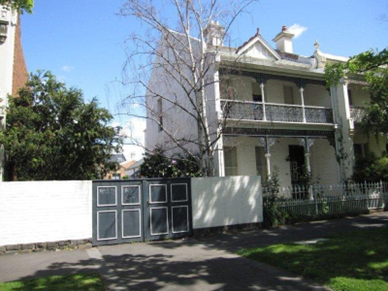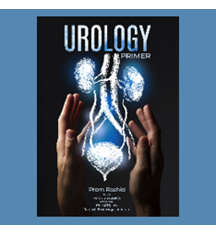2023 | Volume 24 | Issue 2
Recollections and memories of the Royal Parade
Author: Dr Bob Southby
My friend and colleague, Felix Behan, has been a keystone of plastic surgery and a flaneur, in the sense of a strolling observer. In addition to his French connection, he has an Irish background, which brings Bloomsday, June 16, 1904, into the picture. On this day one of the characters in James Joyce’s Ulysses made an odyssey around Dublin.
The first character to appear in the book is ‘stately plump Buck Mulligan’, modelled on Oliver St John Gogarty, an ear, nose, and throat surgeon who was also a poet, politician, and bon vivant. Felix has covered Parkville in general and Royal Parade in particular, becoming the caretaker of the intellectual activity of the scientific and medical élite of the precinct. He is also the last of a long line of eminent plastic surgeons who have practised and, in some cases lived, in Royal Parade.
My odyssey along Royal Parade has been at a somewhat humbler level. In my clinical years as a student at the Royal Melbourne Hospital (1959 –1961), a driveway ran off Royal Parade a short distance north of the Grattan Street corner and led down to the entrance to the casualty department, allowing ambulances to bring patients to the hospital.
In the fifth year, we spent three weeks in Casualty, living in the students’ quarters. We were rostered in groups of three. Of my two colleagues, one was a woman student who had just become engaged, and she spent much of the time elsewhere, arranging her nuptials. The other was a man, I had known for a long time, as we had been together in primary school. He was a reckless adventurer and practical joker. One day when Casualty was quiet, he immobilised the phone in the Casualty theatre in plaster. All hell broke loose when it rang, and he made himself scarce for a few days.
In addition to the general Casualty area, there was a fracture clinic, run by Kingsley Mills, and a soft tissue clinic run by the taciturn plastic surgeon, Bob Thompson. These clinics meant that patients could receive high-class care without being admitted. The students were allowed to suture simple lacerations. I still remember a married couple coming into Casualty, each with numerous bruises and scratches. The husband had a laceration on the forehead, which I was instructed to suture. He was very garrulous and told us that he had been a boxer in his younger days. His mental state suggested that he had won very few of his bouts. All went well until I finished the stitching and, without thinking, dropped the instruments into a metal bowl. He interpreted the resulting clang as the bell signalling the start of a round and jerked himself upright, with fists raised, ready to take on everybody. It took some time to convince him that he was in a hospital and not a stadium.
Those days Casualty was staffed by three interns (junior residents, as we were known) and two senior residents (second year graduates, known as admitting officers). One intern worked from 8 am to 6 pm; the second rotated between the fracture and the soft tissue clinic from 8 am to 6 pm, and then covered the general area from 6.00 pm to 9.00 pm, while the third worked overnight from 9 pm to 8 am. Each admitting officer worked alternate 24-hour periods.
Julian Ormond Smith—known universally as ‘Orm’—was a senior surgeon at the RMH at this time and became president of RACS in 1962. He gave us a superb lecture on the management of abdominal and pelvic injuries, of which he had had considerable experience in World War II.
When one of his interns was at the end of his term—and as was the tradition— was performing an operation under the supervision of the registrar, Orm came into the theatre and asked how the procedure was progressing. The intern said, “Sir, you’re watching the birth of an embryo surgeon.” Orm glanced at the operation site and replied, “Hmm, it looks like a difficult breech.” His relevance to Royal Parade concerns a consultation he was engaged in with a senior physician in one of the medical wards. While a long history was presented, Orm seemed to be in a reverie, looking out the window. At the conclusion, the physician said, “Well, Orm, what do you think?” Orm replied, “If they took all the trees out of Royal Parade the traffic would flow much faster.”
Proceeding north along Royal Parade my personal odyssey comes to a small shop next door to the famous Naughton’s Hotel at 51 Royal Parade. It was owned by my grandfather, who was both a dentist and a pharmacist. I presume that after he had provided dental treatment, he then mixed up appropriate compounds for pain relief. In recent times the pharmacy became a hairdressing salon and, sadly, the beautiful wooden drawers which contained all the preparations for mixing up prescriptions were removed. It is now a café and convenience store.

My grandfather lived further north at 95-97 Royal Parade in a graceful terrace house with, on one side, a block of land on which he created a pleasant garden.
Unfortunately, I never visited the house as a child because he retired to Mentone about the time I was born. However, while I was a student the house was bought by Professor R. D. Wright, widely known as ‘Pansy’—nicknamed after his role as ‘Pansy’, a policeman in a Melbourne University play.
Sir Howard Florey invited Wright to work with him at the University of Oxford (1937–38) where he helped in developing penicillin. Pansy held the chair in physiology and eventually became the Chancellor of Melbourne University. He was down-to-earth in speech, manner, and dress—unlike any ‘pansy’ connotation. He lived alone and, because the house was very spacious, he rented a couple of rooms to students. He was in the habit of doing odd jobs at the weekend, wearing an old singlet and trousers. At the start of one academic year a student whom I knew rented part of the house. During the weekend before the start of the first term, he drew up outside the house in a sports car with his luggage strapped on a rack on the back of the vehicle. Seeing a shabbily dressed man in the garden he said, “Take my bags up to my room.” “Take them up your bloody self,” replied Pansy. It took some time before a harmonious relationship was established.
Further north still, just past Felix’s home, is where Keith Henderson, the eminent neurosurgeon from St Vincent’s, lived at 107 Royal Parade with his family.
Keith was instrumental in furthering the career of Schüller, who became the foundation neuroradiologist, which played an important part in any neurosurgical domain.
To return briefly to my days as an intern at the RMH, I was allocated to a term in neurology. This involved working for Dr E. Graeme Robertson, world-renowned for developing air encephalography. He was a very dignified man with a neat moustache. He had an amazing memory. I accompanied him one afternoon to see 14 referrals. He did not make a single note during this exercise, but after finishing, sat in an office and dictated all the reports. He was an excellent photographer and used this skill to record pictures of cast iron balconies in Parkville and wherever else he happened to find them. This resulted in the publication of elegant coffee table books.
While engaged in neurology I also worked for the assistant neurosurgeon, the Churchillian J. Bryant Curtis (JBC). Initially, I found this term extremely intimidating, but sometime after finishing it, I decided to undertake a career in neurosurgery. This involved working for JBC as a second-year resident at Prince Henry’s Hospital, but I completed my training by spending two years as Keith Henderson’s registrar at St Vincent’s (StV). Keith was a clinician, surgeon, and world-class teacher, and my debt to him is inestimable.
My personal odyssey along Royal Parade ends with an ironic coincidence. When Keith lived in Armadale, he worked out a route from home to StV’s in Fitzroy, which involved going through some of the back streets of Richmond. It enabled him to get to emergencies quickly and safely, without being held up on main roads. One Sunday morning as he took a corner in Richmond briskly, he swerved suddenly to miss a stooped figure shrouded under a black cape, operating a camera on a tripod, to record a picture of a cast iron balcony. Dr Robertson had thought that on a quiet Sunday morning, he was quite safe in the middle of the road.
All the above events concerned the western side of the Royal Parade. The eastern side of this particular section of the thoroughfare is entirely taken up by the University of Melbourne, with Trinity College, the Anglican residential college, located opposite the Henderson home. By allowing the mind to wander back to Dublin, one recalls that that fair city has a very famous Trinity College of its own.

